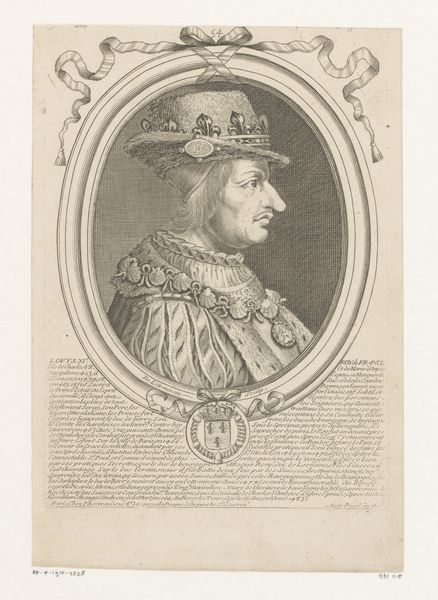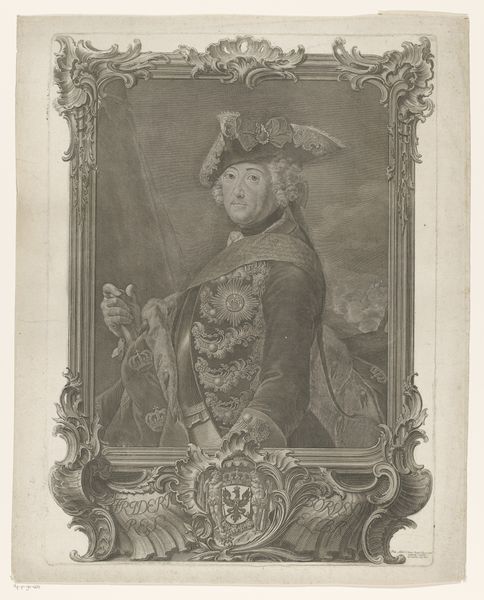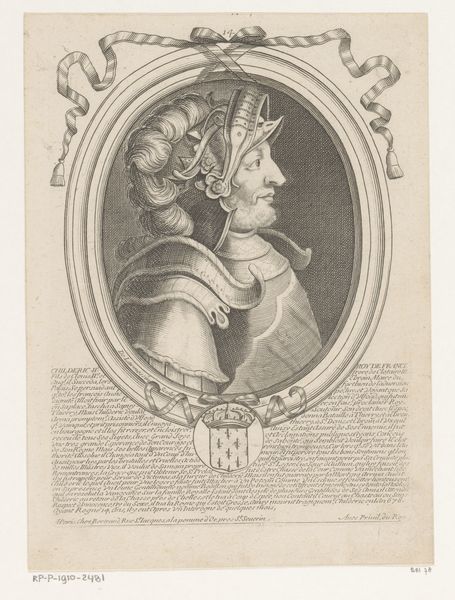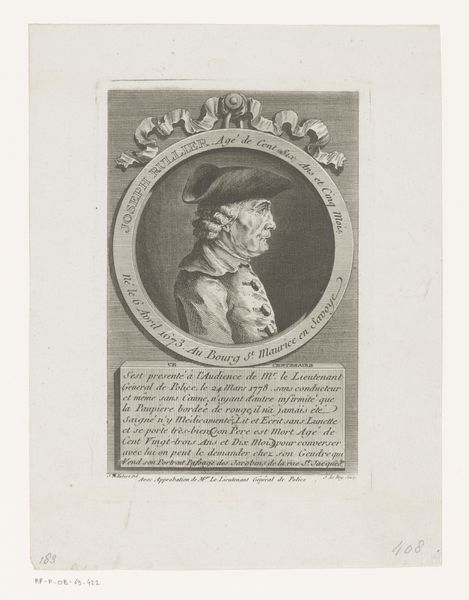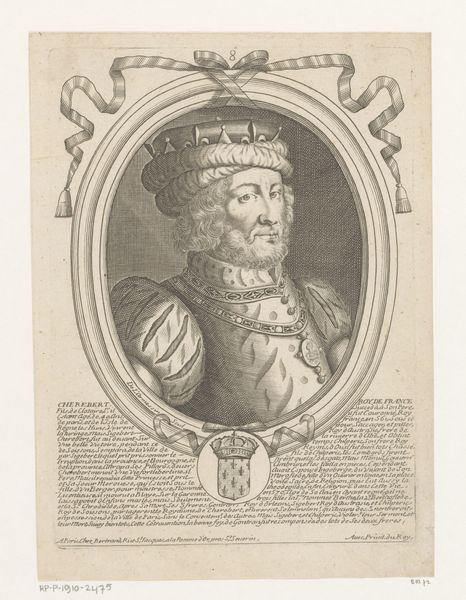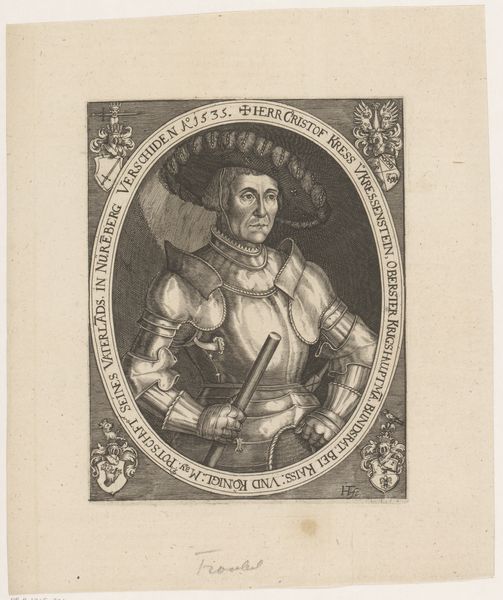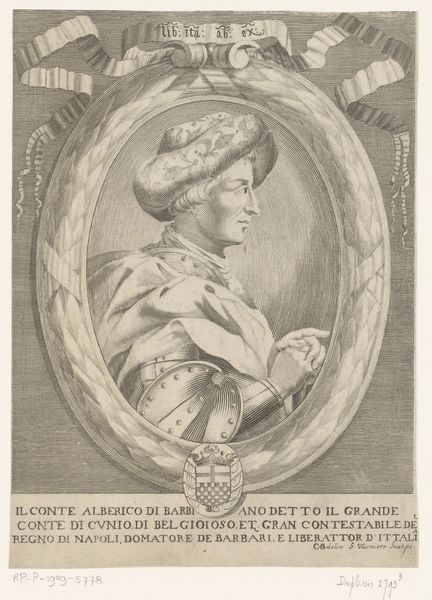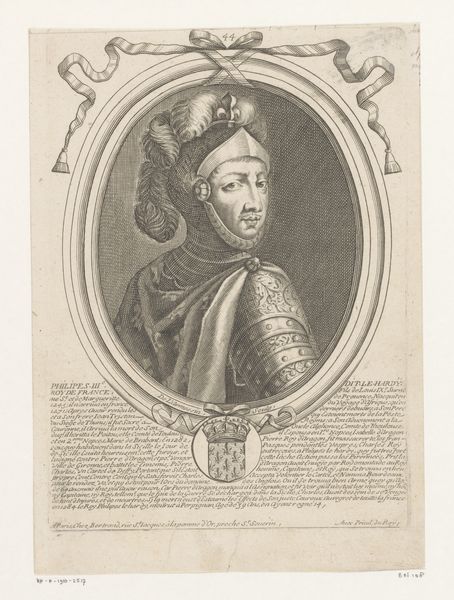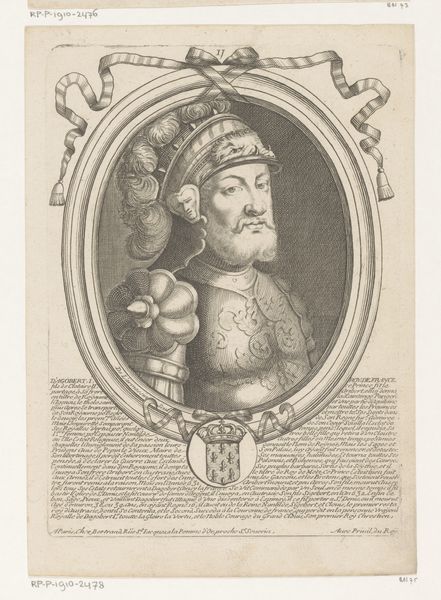
print, engraving
#
portrait
#
aged paper
#
baroque
#
yellowing background
# print
#
old engraving style
#
figuration
#
line
#
history-painting
#
engraving
#
realism
Dimensions: height 240 mm, width 173 mm
Copyright: Rijks Museum: Open Domain
Curator: This is "Portret van Chilperik II" by Nicolas de Larmessin, dating from sometime between 1647 and 1678. It's currently held at the Rijksmuseum. It's an engraving, a print, which is interesting in and of itself for portraits of this nature and time. Editor: The first thing that strikes me is the aged quality of the paper; it really emphasizes the historical distance. And that formal presentation in the engraving really feels like a manufacturing of nobility, the clothing and symbols meticulously rendered. Curator: Exactly, the work exemplifies the Baroque style, steeped as it is in a culture of spectacle and carefully constructed presentation of power. We see Chilperik II positioned deliberately to project authority, which is an identity rooted in patriarchal systems and dynastic claims. Editor: Let's look at the material qualities then; consider the engraver and their tools, and their laborious carving of the lines in a copperplate. What repetitive and specialized action in their workshop gave birth to this single print? Think of the paper stock of the era, or lack of industry regulation during printing. Curator: It underscores how image-making was deeply entwined with socio-political structures. It highlights how the circulation of images helped shape perceptions, specifically within aristocratic circles in France at the time. The fleur-de-lis symbols would've signaled a very particular lineage. The image, even down to its materiality, becomes a symbol. Editor: I agree. And focusing on the printmaking aspect, one is left thinking about access. How many copies were printed? Who was consuming them, and in what setting? How does that impact what this print meant? Curator: It really calls us to interrogate the dynamics of representation. It forces us to think about how certain figures become enshrined through material practices like printmaking, but it makes me consider who’s often excluded from those depictions of power and importance. Editor: Exactly, the means of reproduction themselves dictate the visual record of nobility; a laboring necessity. Curator: By combining our perspectives, we've unearthed a richer appreciation for this portrait. Editor: It’s about appreciating how intertwined material history is with social and political life.
Comments
No comments
Be the first to comment and join the conversation on the ultimate creative platform.
